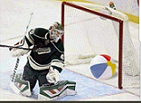McMurfy
Posts: 13792
Joined: 7/31/2007
From: Portland, Oregon
Status: offline

|
quote:
ORIGINAL: MDK
quote:
ORIGINAL: SoMnFan
Time to end another myth.
SAN DIEGO -- Decreases in air resistance spurred by inconsistent seam height on the baseball as well as "changes in player behavior" that produced different launch angles and exit velocities led to the dramatic increase in home runs during the 2019 season, according to a preliminary report released Wednesday by Major League Baseball.
The surge to 6,776 home runs during the regular season -- nearly 11% higher than the previous record set in 2017 -- was accompanied by a decrease in postseason home runs due to a greater drag coefficient, which measures the resistance a moving object faces, according to the report.
The 27-page report was written by Drs. Alan Nathan, Jim Albert, Peko Hosoi and Lloyd Smith, a committee of professors tasked by MLB with studying the record-setting spike.
MLB faced persistent questions during the 2019 season, including from star pitcher Justin Verlander, about whether the league or ball manufacturer Rawlings had intentionally juiced the baseball to promote increased offense. The committee concluded in the report that "no evidence was found that changes in baseball performance were due to anything intentional on the part of Rawlings or MLB and were likely due to manufacturing variability."
At the end of the report, the committee offered a half-dozen recommendations, including studying how the rubbing mud applied to in-game balls influences drag, installing atmospheric-tracking systems to more easily measure drag in the future and studying the possibility of using humidor systems in all 30 major league stadiums to "reduce the variability in storage conditions."
The report is the second that MLB has commissioned in the past 19 months following a similar home run increase between the 2015 and 2017 seasons. While the last report did not offer a determination on why the drag coefficient had decreased over time, the second report suggested that a statistically significant link exists between the height of the seams on balls and the amount of drag they produce. In laboratory testing, the professors analyzed 1,020 balls -- 240 from the 2019 regular season, 240 from 2018, 60 each from the 2013 to 2017 seasons, plus 240 from the 2019 postseason. With a combination of the testing results and Statcast data tracked by the league's camera-and-radar system, the professors concluded that both the ball and players acted differently in 2019.
Using a methodology developed by Albert, the committee looked at two potential effects on home runs: the carry on a ball, which is affected by drag, and the launch conditions, which depends on players' swings. The study said that carry contributed to 60% of the home run increase and launch conditions to 40%. Seam height accounts for about 35% of a ball's carry, according to the report, and the committee developed a new technique that tied seam height to drag coefficient. The report also dismissed "other alternate hypotheses discussed in the media (e.g., roundness, surface roughness, lace thickness)," saying they were not correlated with drag coefficient.
Seams decreased in size to an average of around .0305 inches in 2019, down from .035 inches from 2013 to '15. The lower the seams, the more aerodynamic the ball, and the more aerodynamic the ball, the longer it will fly, according to the report. While the average seam height has been relatively consistent year over year, according to the study, the professors found "large ball-to-ball variation in those quantities."
Among the balls measured in the study, four wound up with seam heights of less than .025 inches. Two balls had seams larger than .0425 inches. Still, with seam height counting for barely one-third of carry, the committee admitted its findings are far from complete.
"While we have learned much from our studies as well as those of other investigators," the report said, "there is much that is not yet understood."
The committee assigned a portion of the home run increase to higher-launch-angle swings increasingly geared toward hitting for power. "Lacking strong evidence that the change in launch conditions are due to changes in the baseball," the report said, "we conclude that they are due to a change in player behavior."
In October, multiple players and managers complained the ball was flying differently than it did during the regular season -- almost as if the playoff baseball had been "unjuiced." St. Louis Cardinals manager Mike Shildt said analysts had determined it was traveling 3½ feet less than in the regular season. While the committee acknowledged "the sample size was far too small to control for players in any meaningful way," it said laboratory testing showed the postseason ball's seam height was similar to that of regular-season balls and said it did not know why playoff baseballs had a greater drag coefficient.
The committee's curiosity about rubbing mud -- which is lightly applied to take the sheen off slick, white baseballs that come out of the Rawlings factory in Costa Rica -- went relatively unanswered. The drag coefficient of a mud-rubbed ball decreased significantly and led to far more inconsistency in the results, according to the committee, which suggested further study of rubbing mud. MLB already has spent recent years trying to develop a ball with tacky properties that does not require mud.
It also suggested a deeper look into a batted ball's spin and said the role of backspin and sidespin "is currently under investigation."
The committee did not delve specifically into how the league could address launch conditions or seam heights or figure out the unsolved properties of carry. It did suggest Rawlings and teams implement a better system to track the dates baseballs are manufactured and log which batches are used in-game. The professors said the preliminary report was to summarize findings and that they are preparing "a more detailed report."
Rubbing of baseballs with mud.......seems awful similar to an episode of Seinfeld where Kramer tells Jerry to pick up some Cubans on his trip to Florida.......the Cubans were people, not cigars and they were Dominicans, not Cubans. Kramer had them wrapping crepes which they wrapped too tight and they exploded in peoples faces.
Who will MLB get to consistently rub the baseball.......
As is usually the case,
most likely themselves.
I’ll be in Little Rock on the 23rd
and Memphis on the 25th,
goodnight everybody.
_____________________________
The Curse of Mauer is gone!
|

 Printable Version
Printable Version
















 New Messages
New Messages No New Messages
No New Messages Hot Topic w/ New Messages
Hot Topic w/ New Messages Hot Topic w/o New Messages
Hot Topic w/o New Messages Locked w/ New Messages
Locked w/ New Messages Locked w/o New Messages
Locked w/o New Messages Post New Thread
Post New Thread